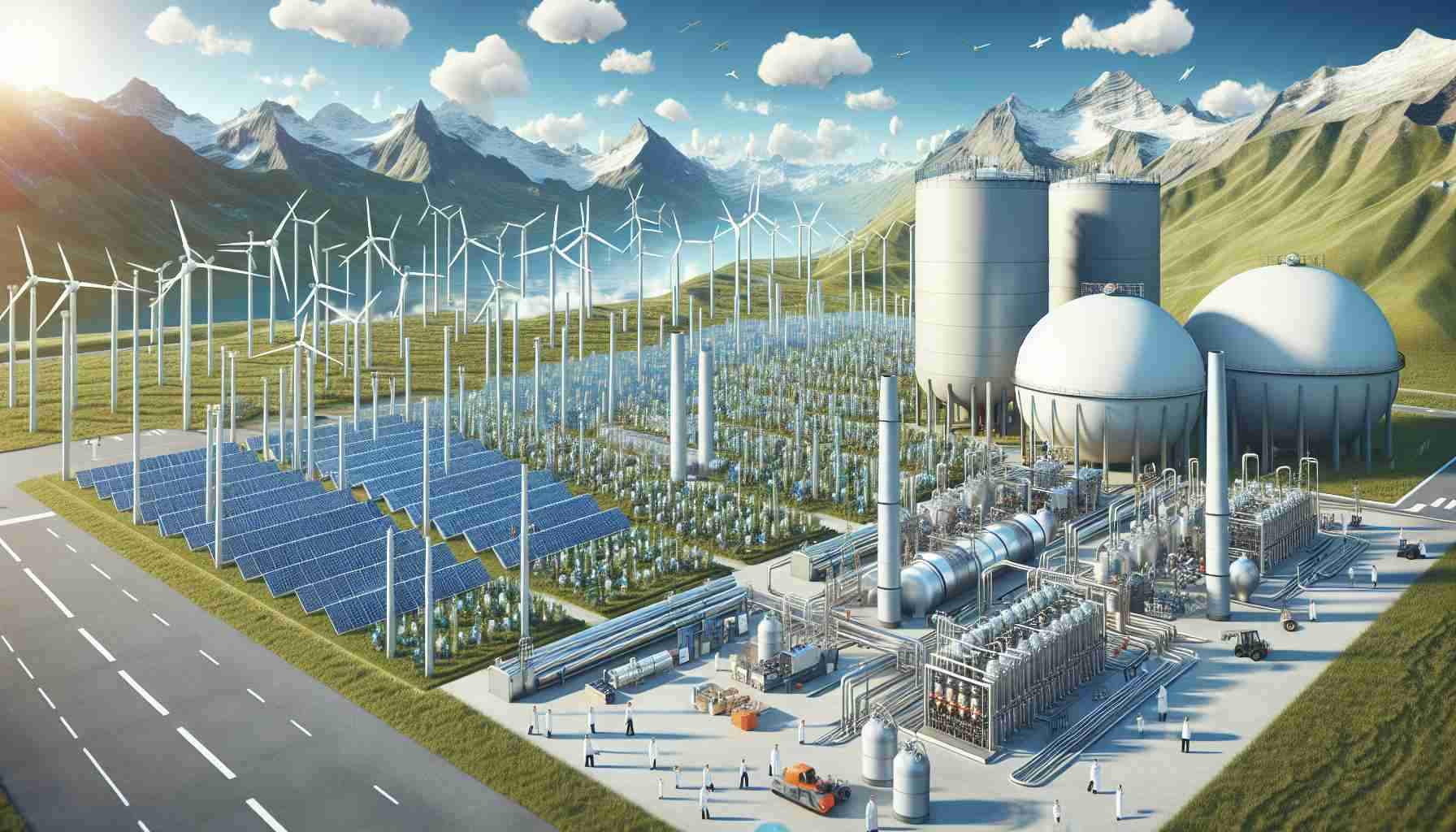Switzerland is setting the stage for a hydrogen revolution. The Federal Council has recently revealed a comprehensive national hydrogen strategy aimed at fostering a robust hydrogen market and enhancing connections with Europe. This significant announcement was made on December 13, 2024, coinciding with the groundbreaking of a new hydrogen production facility led by Swiss renewable energy giant Axpo, along with partners Schätzle, EWA-Energie Uri, and SGV Holding.
The hydrogen strategy embodies a collaborative approach, reflecting insights gathered from internal and external stakeholders, including the gas industry and regional governments. The initiative recognizes that demand for hydrogen may remain limited until the mid-2030s, with a strong focus on CO2-neutral production methods.
The Council envisions a phased development, highlighting the importance of creating a comprehensive hydrogen infrastructure that spans production, transport, and storage. An integral part of this plan involves strengthening domestic capabilities while also establishing robust international partnerships to facilitate imports.
In a remarkable step forward, Axpo, alongside its partners, has initiated a 2 MW green hydrogen plant near a hydropower facility in Bürglen, aiming to produce up to 260 tonnes of hydrogen annually. This green hydrogen will soon be utilized to power infrastructure like SGV’s hydrogen passenger vessel, Saphir, marking a pivotal moment in Switzerland’s commitment to a sustainable energy future.
Switzerland’s Hydrogen Revolution: Paving the Way for a Sustainable Energy Future
Introduction
Switzerland is making significant strides in the hydrogen sector, positioning itself as a key player in the future of renewable energy. Following the unveiling of its national hydrogen strategy on December 13, 2024, the country aims to create a robust hydrogen market while enhancing its connections with European partners. This comprehensive plan reflects a collaborative effort involving various stakeholders and marks the beginning of a new era in Swiss energy production.
The National Hydrogen Strategy
The Swiss Federal Council’s national hydrogen strategy is designed to foster a sustainable and viable hydrogen economy. This initiative emphasizes the importance of CO2-neutral production methods, ensuring that hydrogen generation does not contribute to greenhouse gas emissions. The strategy acknowledges that while hydrogen demand may not surge immediately, a steady and phased approach will be necessary to develop the necessary infrastructure.
Key Features of the Strategy
1. Infrastructure Development: A comprehensive hydrogen infrastructure is critical. This includes:
– Production: Facilities for hydrogen generation will be prioritized.
– Transport: Efficient methods for transporting hydrogen to various regions.
– Storage: Development of storage solutions to manage supply and demand fluctuations.
2. International Collaboration: The strategy aims to strengthen international partnerships, facilitating the import of hydrogen and sharing best practices with other countries.
3. Stakeholder Engagement: Insights from the gas industry, regional governments, and other stakeholders played a crucial role in shaping the strategy, highlighting a community-focused approach.
Innovations in Hydrogen Production
The recent establishment of a 2 MW green hydrogen plant by Axpo and its partners near a hydropower facility in Bürglen represents a groundbreaking innovation in hydrogen production. The plant is anticipated to produce up to 260 tonnes of hydrogen annually. This green hydrogen will be utilized in various applications including powering the hydrogen passenger vessel, Saphir, operated by SGV, demonstrating practical uses of hydrogen in sustainable transportation.
Market Analysis and Future Predictions
As the hydrogen economy evolves, various trends are emerging:
– Rising Demand for Clean Energy: With global emphasis on reducing carbon footprints, the demand for green hydrogen is expected to grow substantially by the mid-2030s.
– Investment Growth: Public and private investments in hydrogen technologies are on the rise, fostering innovation and expansion.
– Potential for Job Creation: Developing a hydrogen economy could create new jobs in production, infrastructure development, and maintenance sectors.
Pros and Cons
Pros:
– Environmental Benefits: Reduces reliance on fossil fuels and decreases greenhouse gas emissions.
– Energy Security: Establishes a reliable and sustainable energy source for Switzerland and its neighbors.
Cons:
– Initial Costs: Infrastructure development can require significant investment upfront.
– Market Maturity: The hydrogen market may take time to fully mature and reach its potential.
Conclusion
Switzerland’s commitment to a hydrogen revolution through its national strategy showcases its ambition to lead in sustainable energy production and consumption. By focusing on CO2-neutral methods and strengthening domestic and international connections, Switzerland is paving the way for a greener future. The successful implementation of these strategies not only promises environmental benefits but also positions Switzerland as a pioneer in the hydrogen sector.
For more insights on renewable energy initiatives, visit Swiss Energy.
